Is Humanity Ignoring Our First Chance For A Mission To An Oort Cloud Object?
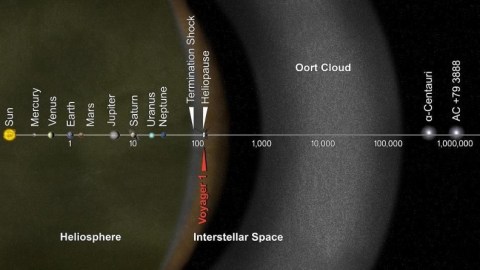
Sedna could be the very first known object from the Inner Oort Cloud. But time is running out to create and launch a mission.
In 2003, scientists discovered an object beyond Neptune that was unlike any other: Sedna. While there were larger dwarf planets beyond Neptune, and comets that would travel farther from the Sun, Sedna was unique for how far it always remained from the Sun. It always remained more than twice as distant from the Sun as Neptune was, and would achieve a maximum distance nearly 1,000 times as far as the Earth-Sun distance. And despite all that, it’s extremely large: perhaps 1,000 kilometers in diameter. It’s the first object we’ve ever found that might have originated from the Oort cloud. And we’ll only get two chances if we want to send a mission there: in 2033 and 2046. Right now, there isn’t even a proposed NASA mission looking at the possibility. If we do nothing, the opportunity will simply pass us by.
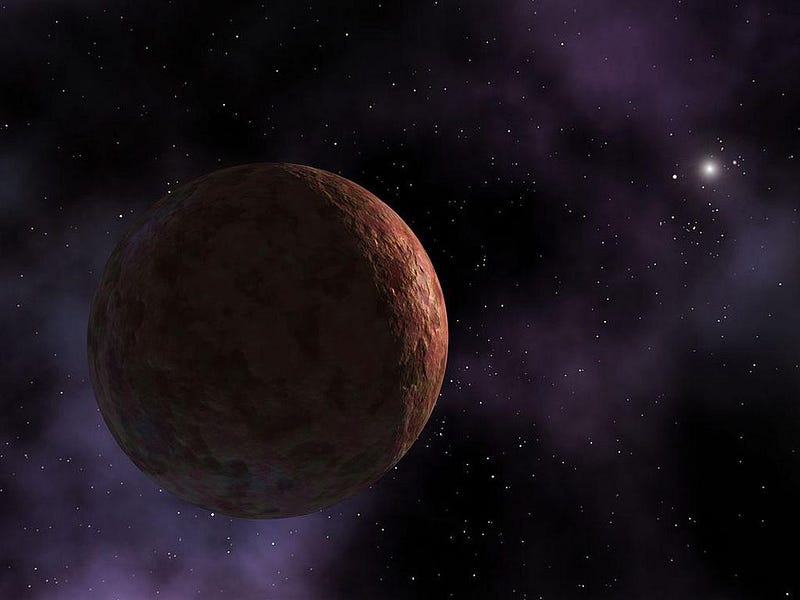
As we journey farther away from the Sun, out past the rocky planets, asteroid belt, and the gas giants, the Solar System doesn’t simply come to an end. There’s the Kuiper belt, home to innumerable icy bodies, ranging in size from dwarf planets like Eris and Pluto down to comet-sized objects and even smaller. Beyond that lies the scattered disk: bodies which once came close to Neptune and were flung into more eccentric orbits, often taking them hundreds of astronomical units (where 1 A.U. is the Earth-Sun distance) from the Sun. Going even farther out are detached objects: bodies which never come close to any of the major planets and which have even larger perihelia than anything from the Kuiper belt or scattered disk. But most distant of all would be objects originating from the Oort cloud: thousands of A.U. away and representative of the edge of our Solar System.

The Oort cloud has not yet been demonstrated to exist, although there are compelling theoretical and indirect observational reasons (such as the ultra-long-period or hyperbolically-orbiting comets we’ve found) to think it’s real. In theory, a spherically-distributed set of bodies that formed very early on, at the same time the Solar System did, should exist from around ~1000 A.U. away all the way to perhaps a light year or two. In 2003, the team of Mike Brown, Chad Trujillo, and David Rabinowitz discovered the first candidate Oort cloud object: Sedna. Sedna has an aphelion (its farthest distance from the Sun) of around 900 A.U., one of the most distant aphelia known. But its closest distance to the Sun (perihelion) is a very large 76 A.U. Sedna never gets close enough to any of the major planets for a gravitational interaction to have scattered it.
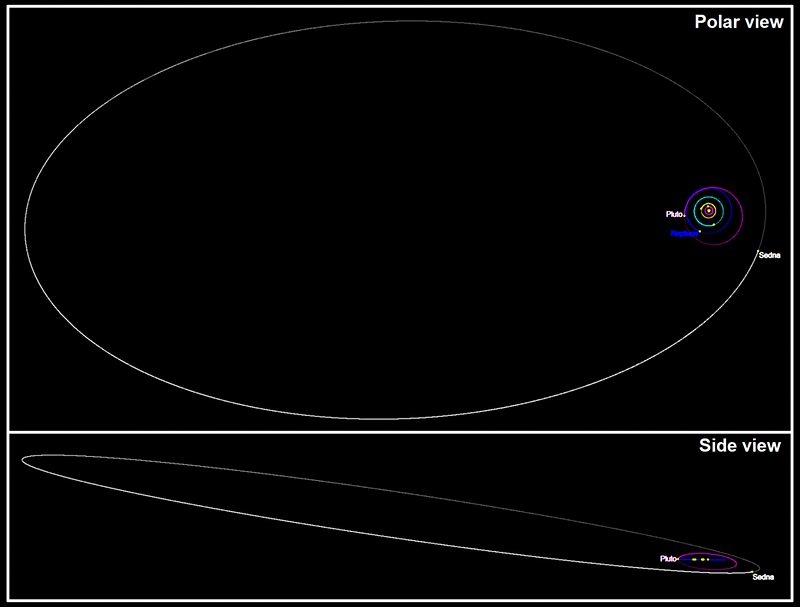
There’s rampant speculation, therefore, that Sedna is the first object we’ve ever discovered originating from the Oort cloud. In the 15 years that have passed since its discovery, only one more Sedna-like object has been discovered: 2012 VP113, with a perihelion of 80 A.U. But the biggest difference is size-wise: Sedna is enormous, with a diameter of 1000 km, making it slightly larger than the dwarf planet Ceres. We were only able to discover Sedna because of how large and bright and reflective it is; to date, it is the only detached object (or beyond) that was discovered by direct obseration. And even at that, we only saw it because it happened to be quite close to perihelion, rather than aphelion, at the time of its discovery.
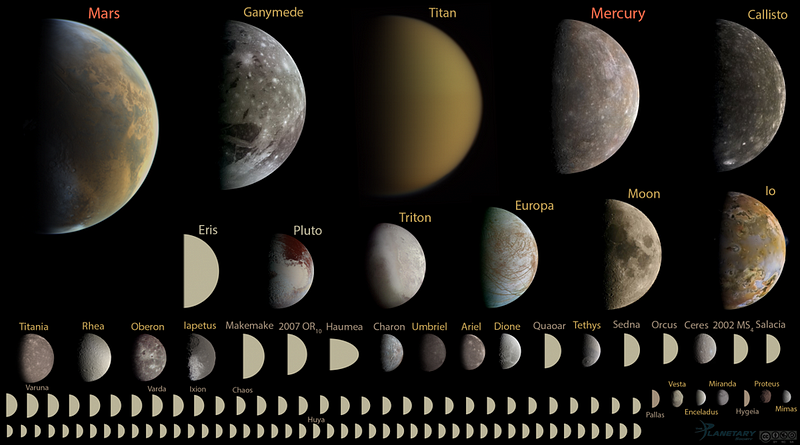
Sedna takes approximately 11,000 years to complete an orbit around the Sun, and is approximately about 85 A.U. away as of today. It is moving closer to the Sun, and will reach perihelion in 2075. Owing to Sedna’s size, orbital characteristics, and its origin, it is often considered to be the most scientifically important trans-Neptunian object ever discovered. And if we choose to, we can send a mission to the outer Solar System to reach it as it nears its perihelion. But due to the orbital particulars of all the planets in our Solar System, we really only get two chances. They’re both coming up fast: 2033 and 2046, if we want to truly learn about this fascinating relic from our Solar System’s formation.
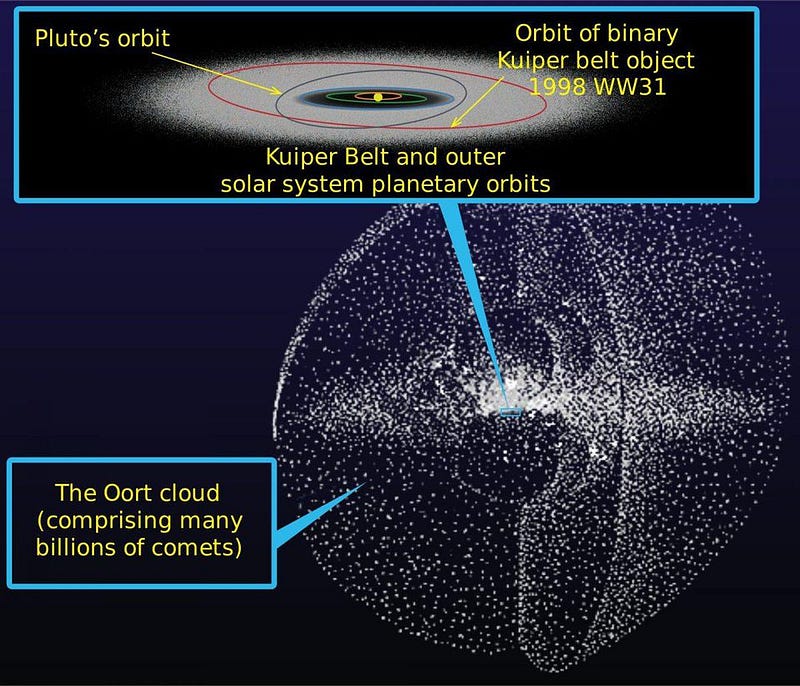
The reasons are simple. Sedna’s impending close approach means we will not get the opportunity to study it this close to the Sun for many millennia again. At present, there are no missions even under consideration by NASA to explore Sedna. In order to get to Sedna, however, the most energy-efficient path would be to use a gravity assist from Jupiter, and there are only two windows where Earth, Jupiter, and Sedna are properly aligned to make such a launch: May of 2033 and June of 2046. If we choose one of these windows, we could arrive at Sedna after a journey of 24.5 years in space. If we chose the 2033 launch, that would correspond to an arrival in late 2057, when Sedna will be 77.27 A.U. from the Sun. The 2046 window would get there in December of 2070, at a slightly closer 76.43 A.U.

Think about everything we learned from the New Horizons mission. We know what Pluto looks like, what its geology is, what its atmosphere is made of, about its various ices, compositions, the weather it experiences, the full extent of its lunar system, its topography, and much, much more. We now understand more about how our Solar System formed and the young objects that formed in its outskirts than ever before. And we did it with instruments that were designed and built in the early 2000s.
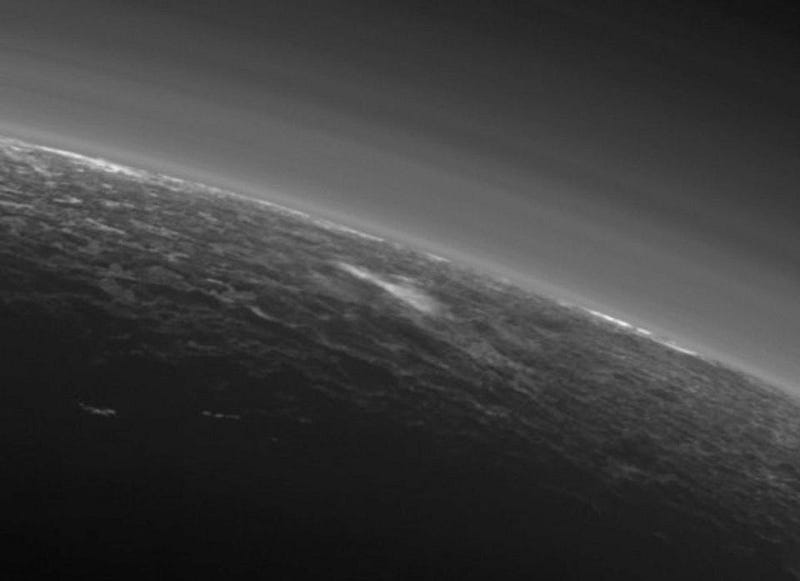
Now, imagine learning those same things about a whole new class of objects: bodies that originated from far beyond where our Solar System’s protoplanetary disk formed. Imagine what we instruments we could design and build, and what scientific questions we could answer, if we constructed a mission during the 2020s or 2030s. This is our best chance to explore what’s possibly the most unique and serendipitous object that will pass close to our Sun for thousands of years, and if we ever believed in the spirit of space exploration, this is our golden opportunity.

Does the Oort cloud exist? Is Sedna, in terms of composition and its geophysical properties, distinctly different from the objects that formed in the Kuiper belt? Does it have its origin in the Oort cloud? At its extreme size, what are its planetary science properties? Does it have satellites or an atmosphere? Does it rotate or tumble, and are there ingredients for life on it? These are questions that, if we’re curious about them, we could design and build a mission that gives us the answers. Sedna won’t be back for over 10,000 years, and it may be the largest, most distant object that we’ll have the chance to have a close encounter with until its return. Missions take a very long time to design, plan, and execute, particularly the most ambitious ones. If we want to go in 2033, the time to start planning is now.
Ethan Siegel is the author of Beyond the Galaxy and Treknology. You can pre-order his third book, currently in development: the Encyclopaedia Cosmologica.





